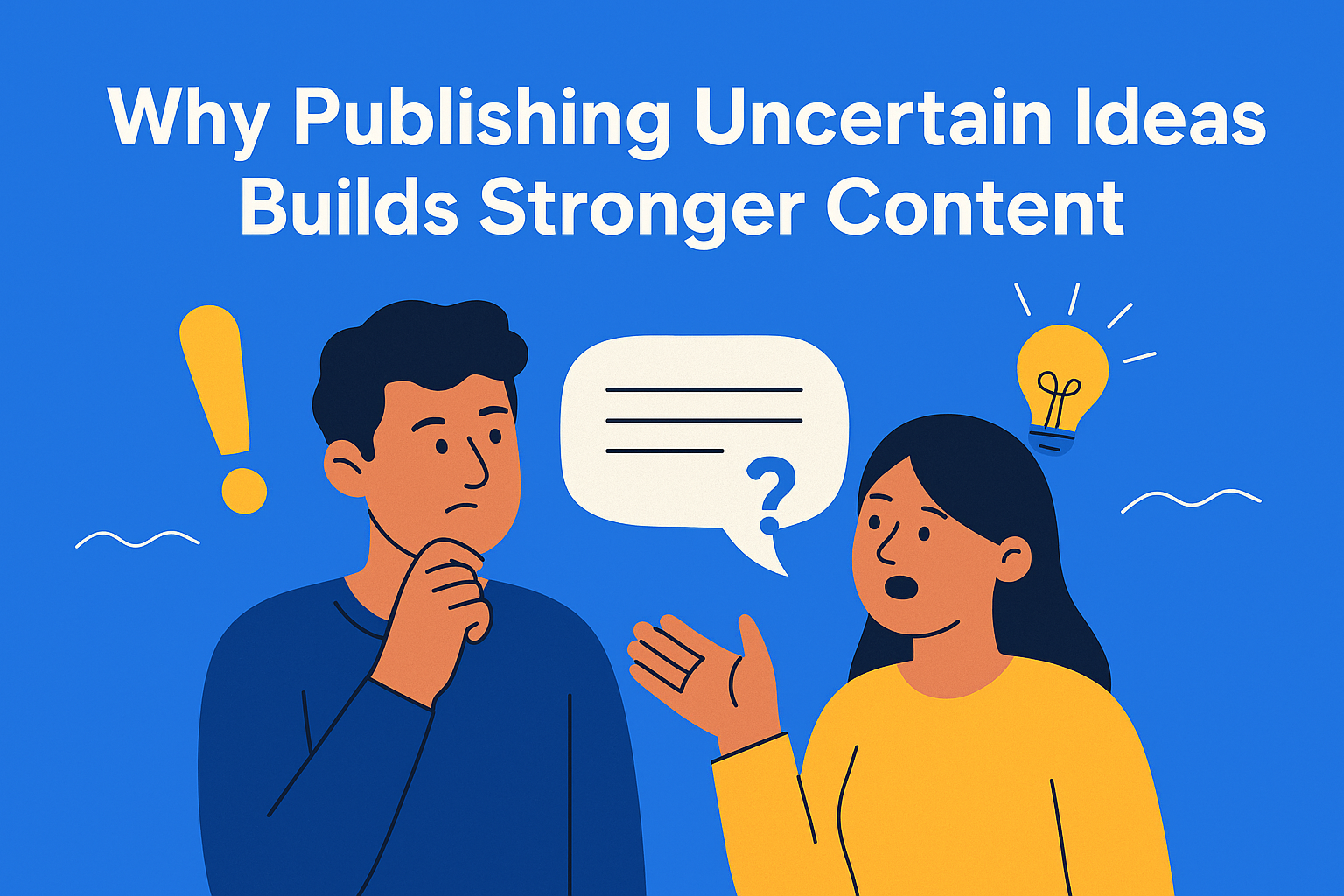The Case for Publishing Content You Don’t Fully Believe In
Not every post has to be perfect. Sometimes sharing uncertain or even provocative ideas sparks debate, builds community, and drives engagement. Imperfect content can be more powerful than polished, 'safe' writing.

We usually think that a text has to be perfect and without mistakes to have value. But in reality, those “polished” texts often don’t spark any reaction. People read them and forget them. When, however, you share an idea that is uncertain or even a bit provocative, that opens space for conversation. People start to comment, share opinions, debate - and that’s the real value. That’s why it makes sense to publish even the things you’re not completely sure about.
Key Takeaways
- Perfect ≠ impactful - overly polished texts are often forgotten, while imperfect ones spark reactions.
- Uncertainty invites connection - showing doubt makes you human and opens doors for honest dialogue.
- Provocative ideas drive engagement - even unfinished thoughts can trigger debate, comments, and shares.
- Risks can be softened - frame posts with curiosity (“I’m not sure, but let’s think together”) to reduce criticism.
- Imperfect > safe - brave, imperfect texts build stronger communities than safe but forgettable ones.
The myth of “perfect” content
We are often afraid that someone will judge us or say we’re not professional enough if our content isn’t flawless. And then those “safe” texts appear nicely written, but empty. They don’t move anyone, they don’t provoke anyone to stop and think. And what happens? They are quickly forgotten.
But the audience doesn’t actually want perfection. People want to hear honest thoughts, even when they are not fully formed. They didn’t come for grammar lessons; they came for ideas that make them pause and think: “Hmm, I never looked at it this way.”
The power of imperfect and provocative ideas
When you write something you’re not completely sure about, it feels human. You sound more honest, not like a “guru” who knows everything. That vulnerability opens up space for people to connect with you.
And provocative ideas? They are magnets for discussion. When you write something that goes outside the expected box, people react. Some agree, some don’t, but everyone wants to share their view. And that’s where engagement happens. Often, those are the texts that attract the most comments and shares, much more than the perfectly polished posts.
Writing doesn’t have to be the final word. It can be an invitation to think together - and that’s its real strength.
How uncertain ideas build community
When you share an unfinished thought, you’re actually inviting people to finish it with you. For example, you might write something like: “Maybe I’m wrong, but I feel like people today listen to each other less and less. Is it because of the fast pace of life, or something else?” That’s an example of a thought that isn’t fully formed, but it opens the door for reactions. It’s no longer a monologue, but a conversation. The audience doesn’t feel like you’re lecturing them, but like you’ve invited them to the same table. Their opinion then becomes part of the story.
In this way, you don’t just build an audience, you build a community. People feel that their voice changes the picture. Your text becomes an open space for different ideas, and you gain insights you might never have found alone.
Risks and how to soften them
Of course, it’s not all rosy. When you write about things you’re not sure of, someone might say you don’t know what you’re talking about. Or that you’re confusing people. That happens. But you can soften it.
It’s enough to say right at the beginning: “I’m not completely sure, but let’s think about it together.” People then understand you’re not offering ready-made answers, but an invitation to talk. Your tone should be curious, exploratory, not authoritative. That way, the risk decreases, because the audience doesn’t expect you to know everything.
Criticism will always exist, but when your stance isn’t “I’m right,” but “let’s discuss,” even negative comments become part of the game, not a problem.
Practical tips for publishing uncertain ideas
If you want to try this approach, here are some quick tips:
- Ask a question instead of giving a final answer.
- Show your dilemma - people like to see your thinking process.
- Ask for the audience’s opinion - say “What do you think?”
- Accept disagreement - it’s not a threat, but a contribution.
- Be honest - there’s no need to pretend you know everything.
This way, the text stops being static and becomes alive.
Why it’s better to be “imperfect” than “safe”
Perfect texts rarely change anyone’s mind. They are decent, but they don’t leave a mark. Imperfect texts, full of questions and dilemmas, hit people because they push them to think and react.
When you share even what you’re not sure about, you give yourself and others space to grow. Today, when everyone wants to look “perfect,” the courage to be imperfect can be your greatest strength.
This is not deceiving the audience. It’s showing that you are a human being who learns and explores. And that’s what people value.
Conclusion
Writing doesn’t have to be a constant chase for the perfect text. Texts you’re not fully sure of can become the strongest sparks that start conversations and build community.
So, next time you wonder whether to publish something that feels unfinished, remember: maybe that exact thought can spark people to talk, think, and grow.






